Wood Table Leg and Base Styles
By Bailiegh Basham · December 15, 2022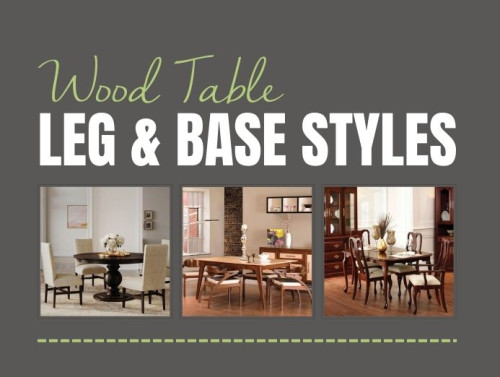
When shopping for a new dining table, you’ll consider a number of different factors: shape, dimensions, wood type, edge profile, etc. One key decision which will influence the entire table design is the style of leg and base. This won’t only influence its decor theme in relation to the surrounding dining room, but also the cost of the piece.
Below, we break down popular leg styles into those commonly seen with contemporary wood tables versus more traditional furniture. Keep in mind that these are loose generalizations rather than hardened rules.
Leg Styles Associated With Mid-Century & Modern Wooden Tables
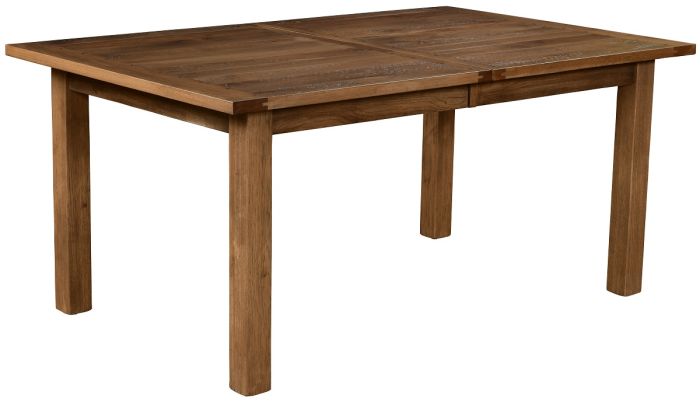
- Straight Legs - This style of wooden table leg is exactly how it sounds; straight up and down without any curvature or enhancements, exemplified by the Saginaw Dining Table. There are two upsides to such a minimalistic design, starting off with a more affordable price tag of the table, as the straightforward leg design means less labor. Secondly, the leg’s simplicity allows the table to accommodate a diverse range of decor themes, from contemporary to farmhouse to mission.
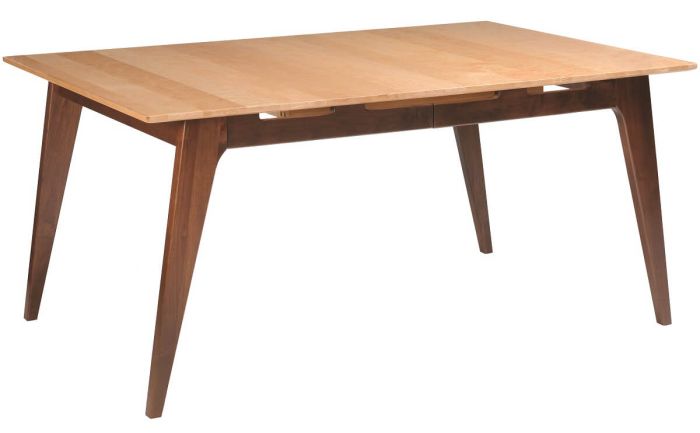 Angled Tapered Legs - Elegantly demonstrated by the Cortez Leg Table, this style of leg holds true to the simplicity of mid-Century and modern design while adding subtle yet eye-catching flair. The legs tilt outward and narrow towards the bottom. This style can be executed with round or rectangular legs.
Angled Tapered Legs - Elegantly demonstrated by the Cortez Leg Table, this style of leg holds true to the simplicity of mid-Century and modern design while adding subtle yet eye-catching flair. The legs tilt outward and narrow towards the bottom. This style can be executed with round or rectangular legs.
-
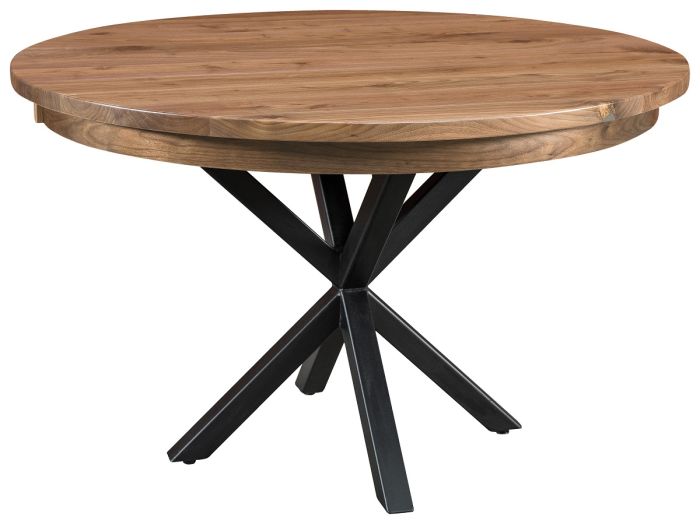 Starburst / Spider Table Legs - Not all legs are attached to the ends of the table, as demonstrated by the single pedestal style, which we’ll dive deeper into later in the piece. In this particular style, the legs are fixed to the center at an angle that provides equal support, demonstrated by the Clarendon Single Pedestal Table.
Starburst / Spider Table Legs - Not all legs are attached to the ends of the table, as demonstrated by the single pedestal style, which we’ll dive deeper into later in the piece. In this particular style, the legs are fixed to the center at an angle that provides equal support, demonstrated by the Clarendon Single Pedestal Table.
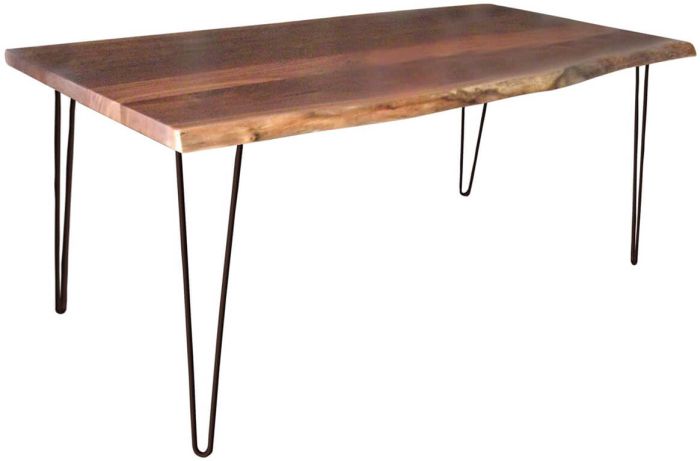 Metal Hairpin legs - Pictured with the Kediri Live Edge Dining Table, combining this style of metal legs with a wooden table top can result in a chic industrial look. For more looks like this, see Modern Dining Tables With Metal Bases and Wood Tops.
Metal Hairpin legs - Pictured with the Kediri Live Edge Dining Table, combining this style of metal legs with a wooden table top can result in a chic industrial look. For more looks like this, see Modern Dining Tables With Metal Bases and Wood Tops.
Leg Styles Associated With Traditionally Themed Wooden Tables
Keep in mind that, as a decor theme, traditional style encompasses a broad range of eras and design influences.
- Cabriole Table Legs - Often associated with Queen Anne tables but seen throughout many traditional design themes, the cabriole leg style is characterized by the undulation of the silhouette, sloping outward at the top before curving inward towards the bottom before ending with a flared foot. For an example of this leg style, look no further than the Beverly Queen Anne Table.
- Turned Legs - The name comes from the method in which craftsmen shape this style of wooden leg. They place the dowels within a lathe which turns it at high speeds while they gradually chisel. The results are smooth, decorative swells, commonly seen within French Country or Farmhouse tables.
- Fluted legs - Fluted legs can come in many shapes, as this term refers to the rutted texture rather than the silhouette. For an example of this style, look no further than the Carliss Single Pedestal Table.
- Scrolling Legs - Beautifully executed on the Virginian Pedestal Table, scrolling legs feature ornate semi-circles (with or without a swirl design). There is no singular configuration this style of leg uses, but often there is clear in-and-out.
- Saber Legs - Taking inspiration from the saber sword, this style of wooden leg is simple, slender, and has a slight curve (check out St. Lucia Ladder Back Chairs for an example). While you may see the end taper off, it’s not a mandatory characteristic.
Understanding Types of Wooden Table Bases
Above, we dove into the silhouettes of different table styles. However, this paints an incomplete picture of all your options, as the legs can come configured in a variety of different ways.
Wooden Single Pedestal Tables - Much like the name suggests, this style of table will have a centered base either consisting of a single support or a series of legs that extend from a single point. The pedestal base is often an opportunity for traditional and contemporary tables alike to add decorative flourish, as exemplified by the Weslaco Dining Table. The thick pedestal base can also be transformed into cabinets for added kitchen storage.
A downside of the single pedestal table is that it can only support limited lengths. A solution to this potential problem is the use of double pedestal dining tables.
Wooden Trestle Dining Tables - A close cousin of the double pedestal table, this piece has two (or more) support pieces positioned at the ends. What defines a trestle table is a connecting bridge between the supports, present for decorative purposes.
Wooden Leg Tables - No conversation about wooden table bases would be complete without acknowledging the classic leg table. This category can encompass a broad range of styles, contemporary and traditional alike. The key characteristic is that the legs are positioned in the corners unattached from one another. While there are exceptions, they tend to use less wood than trestle and pedestal tables, which can lower the asking price.
Have Additional Questions About Table Leg Styles? We Have Answers
The team at Countryside Amish Furniture is here to provide the guidance you desire to find the perfect wooden table for your dining room. Contact us using the live chat, email, or phone with any questions regarding different leg styles, different table expansion options, how self-storing leaves work, counter height and bar height, and seating capacity.

